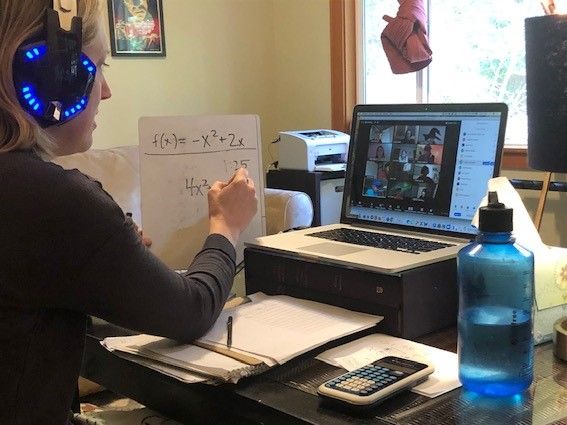Hyla Stories
Tools of the Trade: Engaging students during distance learning is about more than technology
May 15, 2020


Click. Zoom. Download. Upload. As students sit at screens for distance learning, it is tempting to focus on technology. Although technology is an essential pathway between teachers and students within the mandated distance environment, it is only one element within the teaching and learning interplay. Whether in person or on screens, the craft of teaching integrates a variety of tools and methods to engage students, sustain their interest, introduce challenges, and provide encouragement – all while delivering content and moving through curricular units.
In distance learning, Hyla teachers continue to do this work: they create differentiated strategies for student engagement and leverage an array of teaching technologies. In art class, Kate decided that Padlet worked better than Flipgrid for the sharing and discussion that is essential to art class because the variety of ways students can provide feedback was more inclusive and therefore encouraged greater participation. David developed new slides so that students can visually access content throughout class, beginning with a welcome slide of a funny history comic that provides transition and establishes common focus. Apple Pencil is an effective method for Cindy’s individualized math instruction. Emelio uses functionality within Google HyperDoc to “see” when students access content so he can respond real-time and reach out to individual students to encourage participation. Emelio and others have also moved to Loom to provide feedback to students through videos because it’s more personal. Jeff discovered that Zoom expands the concept of “place” (essential to connection with students) to include their homes, so he invites students to share something from home at the end of class – one student sang a song, another played a piece on the piano.
Many engagement strategies are not technology based. Kim emphasizes the importance of seeing each other’s faces during class and helping students get comfortable with seeing their own image to encourage participation. Kiplinn continues to reach beyond “classroom walls” and has invited special guests to class for Q&A in Spanish. Chris brings flexibility and attentiveness to each drama class to balance student needs with lesson plans so he can meet students where they are, adjust, and “let the improv skills take over” as needed. In science class, Alex encourages students to think creatively and appreciate that “the world is our lab,” – full of real-life science from our kitchen to our backyards. In Humanities, Jennifer connects with students by recalling the physical space of her classroom: as she welcomes the last student to class, she might ask them to “close the door behind them,” or invite students to a particular spot in her classroom for a lesson – and students join in the game. What works best for Cooper in Human Relations class is to bring two intentional tools: appreciation for students (“they showed up”) and his own enthusiasm (“I really want to be here, too.”).
Behind the scenes, Hyla teachers share new tools and train each other to support each other’s work. Whether technology-based or not, what drives each strategy is Hyla’s fundamental belief that personal connection with students is essential. Distance doesn’t change that.
